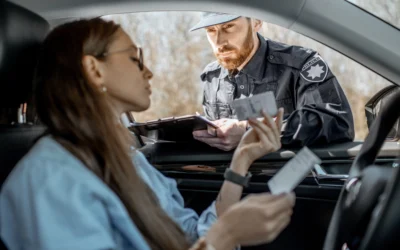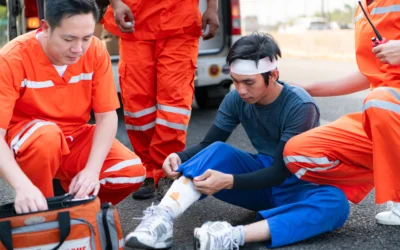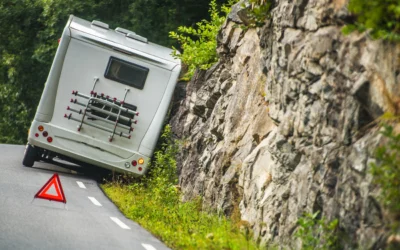What Must You Know Before Riding in Nevada?
Riding a motorcycle in Nevada offers freedom and excitement, but it also comes with responsibilities every rider should understand. Knowing the motorcycle safety laws in Nevada is essential not only for your safety but also for legal compliance. These laws are designed to protect riders, passengers, and other motorists on the road. Following them can reduce the risk of accidents and avoid fines or other penalties. This guide will break down Nevada’s key safety laws to help you ride safely and legally.
Key Takeaways:
- Nevada requires all motorcycle riders and passengers to wear helmets that meet Department of Transportation (DOT) standards. Motorcycles must also have proper equipment, including working lights, mirrors, and brakes. Lane splitting, or riding between lanes of traffic, is illegal, and motorcyclists must stay in their designated lane. Additionally, operating a motorcycle under the influence of alcohol or drugs can lead to severe penalties, including fines and license suspension.
- To ride a motorcycle in Nevada, you need a Class M license and liability insurance. Helmets and eye protection are mandatory under Nevada law, with DOT-approved helmets being required for all riders and passengers. Nevada law prohibits lane splitting but allows lane sharing between two motorcycles. Riding a motorcycle under the influence of drugs or alcohol is dangerous and illegal, with serious consequences such as fines, DUI school, and possible jail time.
- Motorcycle riders in Nevada must follow strict safety laws, including wearing helmets and obtaining a Class M license. The state also requires motorcycles to have functioning lights, mirrors, and brakes to ensure road safety. Lane splitting is prohibited, and riding under the influence of alcohol or drugs carries harsh penalties, including possible jail time. To stay compliant, motorcyclists should regularly maintain their bikes and avoid risky practices like lane splitting.
Helmet and Protective Gear Laws
As part of Nevada’s strict motorcycle safety laws, all motorcycle riders and passengers must wear helmets while on the road. The helmets must meet standards set by the U.S. Department of Transportation (DOT), ensuring adequate protection in an accident. DOT-approved helmets have specific features like a thick inner lining, a secure chin strap, and a label certifying they meet federal safety standards.
Along with helmets, Nevada law also requires riders to wear protective eye gear, such as goggles or a face shield if the motorcycle does not have a windshield. These measures protect riders from debris, wind, and potential injuries.
Although Nevada law doesn’t mandate additional protective gear, wearing gloves, jackets, and boots for further protection is strongly recommended. Proper riding gear can minimize injuries in case of a fall and increase visibility on the road, especially at night.
Licensing and Insurance Requirements
To legally ride a motorcycle in Nevada, you must obtain a Class M license. This license ensures riders have the necessary skills and knowledge to operate a motorcycle safely. To get a Class M license, you must pass both a written knowledge test and a road skills test. For those who prefer a structured learning experience, Nevada offers motorcycle safety courses that can waive the road test upon completion.
If you are under 18, there are additional requirements. You must hold a motorcycle instruction permit for at least six months and complete 50 hours of supervised riding before getting your full Class M license. This process is in place to ensure younger riders gain the necessary experience before hitting the roads independently.
Nevada also requires motorcycle riders to have liability insurance. This coverage protects riders in accidents and ensures financial responsibilities are met. According to Nevada Revised Statutes: NRS 485.185, the minimum insurance coverage in Nevada includes:
- $25,000 for bodily injury per person
- $50,000 for bodily injury per accident
- $20,000 for property damage.
Without proper insurance, you could face fines and even the suspension of your license.
Motorcycle Equipment Requirements
In Nevada, motorcycles must meet specific safety standards to operate on the road legally. These requirements ensure that your bike is visible to other drivers and safe to ride.
Lighting Requirements:
- At least one functioning headlight.
- A taillight visible from 500 feet.
- A brake light visible from 300 feet in daylight.
- During inclement weather and nighttime driving (half an hour after sunset to half an hour before sunrise), headlights must be visible from 1,000 feet.
- The headlamp height must be between 24 and 54 inches from the ground.
Mirror and Turn Signal Requirements:
- Mirrors on each handlebar, each at least three inches long, providing a clear view of at least 200 feet behind.
- Electric turn signals are mandatory for motorcycles manufactured after 1973, with white or amber front lights and amber or red rear lights.
Other Safety Equipment:
- Front and rear brakes.
- Fenders on both wheels.
- A functioning horn.
- A muffler to control exhaust noise levels.
Visibility and Handlebar Requirements:
- A rear reflector that is visible from 300 feet and mounted between 20 and 60 inches from the ground.
- Handlebars must not extend more than six inches above the rider’s shoulders when seated.
These regulations, found in Nevada Revised Statutes: NRS 486.231, are designed to ensure the safety and functionality of the motorcycle on public roads.
Lane Splitting and Lane Usage
In Nevada, lane splitting—riding between two lanes of traffic moving in the same direction—is illegal. While it may be allowed in states like California, Nevada law strictly prohibits this practice. Motorcyclists must stay within their designated lane and are entitled to the full use of that lane. Attempting to squeeze between cars or bypassing traffic between lanes can result in fines and safety hazards.
However, Nevada law does allow two motorcyclists to share a lane, provided both riders agree to do so. This practice, called lane sharing, is permitted only between motorcycles and not between a motorcycle and another type of vehicle.
Following lane usage rules is essential to prevent accidents and avoid penalties. Violating lane-splitting laws can lead to traffic citations and contribute to collisions, as drivers may not expect motorcycles to pass between lanes.
DUI Laws for Motorcyclists
In Nevada, the laws governing driving under the influence (DUI) apply to motorcyclists just as they do to drivers of other vehicles. Operating a motorcycle while impaired by alcohol or drugs can lead to serious legal consequences. The legal blood alcohol concentration (BAC) limit in Nevada is 0.08%. If you are found operating a motorcycle with a BAC at or above this level, you can be charged with a DUI.
According to NRS 484C.400, penalties for a first-time DUI offense include fines, community service, mandatory attendance at DUI school, and a possible license suspension. If you are convicted of multiple offenses, or if your DUI results in injury or death, the penalties become much more severe, including longer license suspensions, higher fines, and potential jail time.
Riding a motorcycle under the influence is especially dangerous because motorcyclists are more exposed than car drivers and have less protection in the event of a crash. According to Nevada law, anyone operating a motorcycle under the influence not only risks their safety but also faces severe legal repercussions.
By complying with these laws, you’ll avoid fines and ensure your and others’ safety on the road.
Get Trusted Legal Help for Your Motorcycle Accident and More
Riding a motorcycle in Nevada offers excitement and freedom, but staying compliant with motorcycle safety laws in Nevada is essential for your safety and to avoid legal complications. If you’ve been involved in a motorcycle accident or are facing legal challenges, having the proper legal support can make all the difference.
At Joey Gilbert Law, we are committed to helping motorcyclists protect their rights and secure the compensation they deserve after an accident. Our law firm also handles cases in personal injury, DUI defense, immigration law, and criminal defense. With extensive experience across these practice areas, we’re here to support you through every step of your case.
Contact Joey Gilbert Law today for a free consultation. Let us assist you in achieving the best possible outcome for your legal matter.




